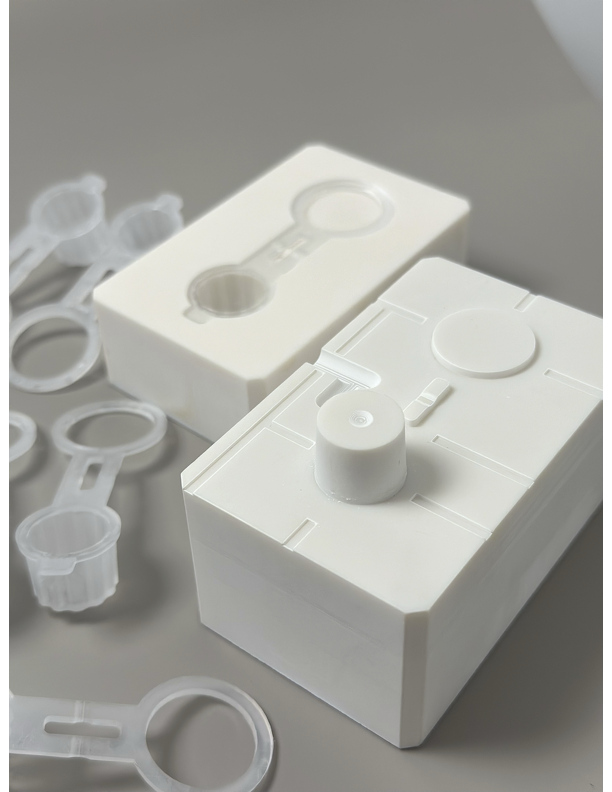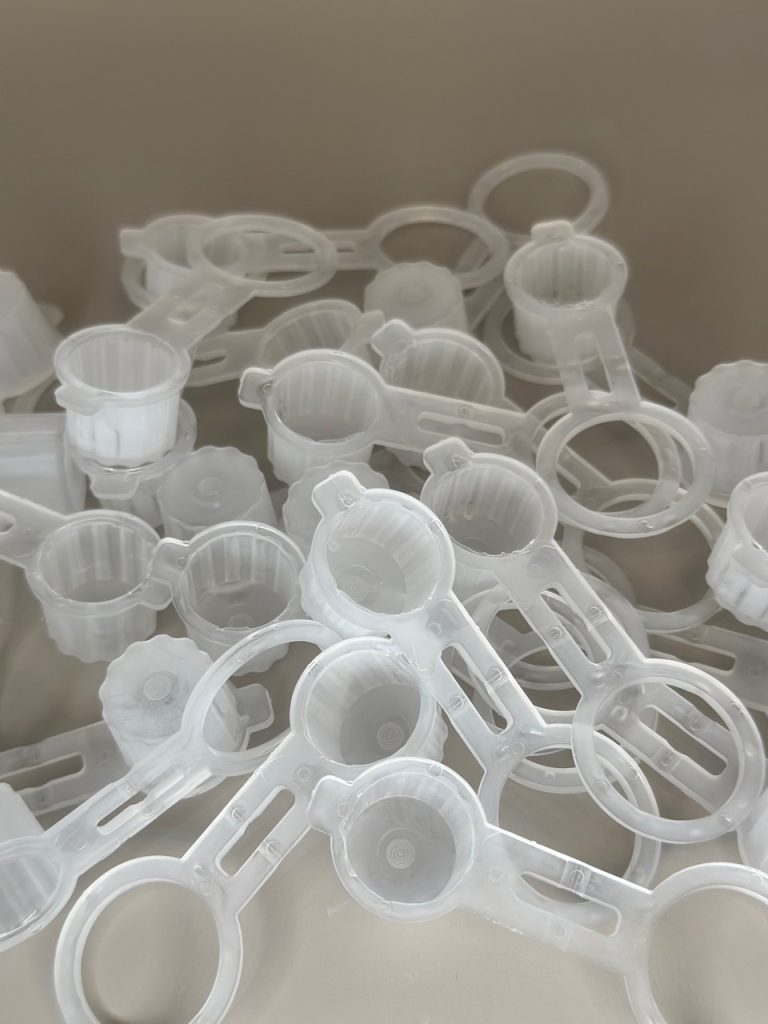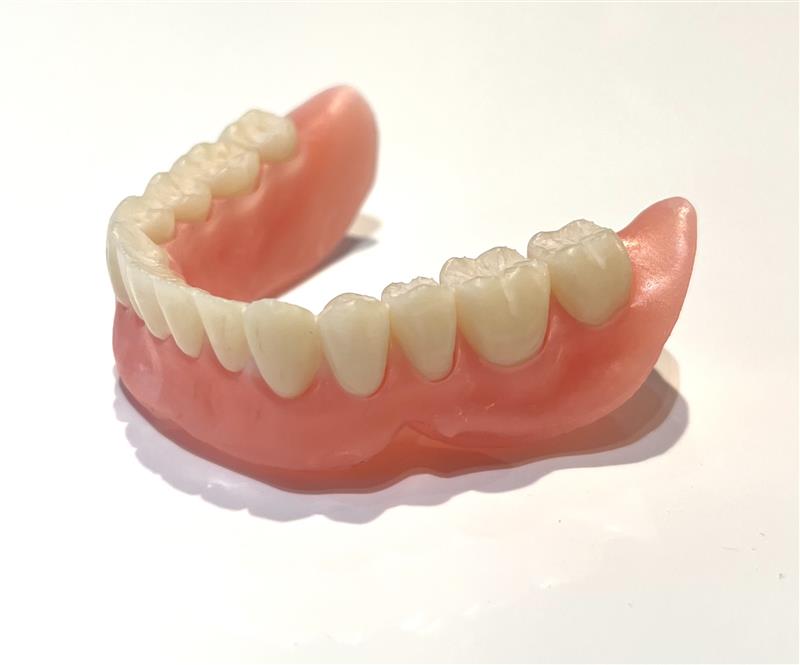Axtra3D is a transformative AM organization bringing high-speed, high-resolution capabilities to the resin 3D printer market.
Headquartered in Charlotte, NC, USA, with a subsidiary in Vicenza, Italy, the company specializes in advanced additive manufacturing optoelectronics solutions.
Axtra3D has made notable strides with its proprietary Hi-Speed stereolithography (SLA) technology across industrial and healthcare applications. This integrates 3D printing speeds up to 20 times faster than competing resin systems, high part fidelity, and a generous build volume.
The core advantage of Axtra3D’s Hi-Speed SLA lies in its technology, customer-specific business models, and industry-wide materials ecosystem. This trifecta unlocks significant value and enhances customer experience.
Read on to learn more about Axtra3D’s novel 3D printing technology, and how the company differentiates within the resin 3D printer market.

Hi-Speed SLA 3D printing
Axtra3D’s Hi-Speed SLA features three key technology innovations: Hybrid PhotoSynthesis (HPS), TruLayer Separation, and TruLayer Adaption. These technologies are incorporated into the Lumia X1 3D printer, Axtra3D’s flagship product.
HPS integrates a laser and Digital Light Processing (DLP) system to simultaneously image internal and external structures. The DLP handles large build areas to ensure high throughput, while the laser processes intricate details and external walls, unlocking high resolution. According to Axtra3D, this combination allows the Lumia X1 to produce exceptionally detailed parts quickly and efficiently.
TruLayer Separation facilitates seamless layer transitions by rapidly detaching the active print layer. This removes the hydrostatic forces typically associated with layer separation in DLP and LCD printers. Such forces can cause parts to move, deform or detach from the build plate. TruLayer Separation reduces wait times and enables complex parts to be 3D printed with a glass-smooth finish.
TruLayer Adaption dynamically adjusts the build plate to maintain precise resin thickness, ensuring it is flat for each layer. Unlike fixed glass plates in other resin 3D printers, this dynamic adjustment prevents the need for prolonged curing times. It also guarantees consistency across the entire build platform.
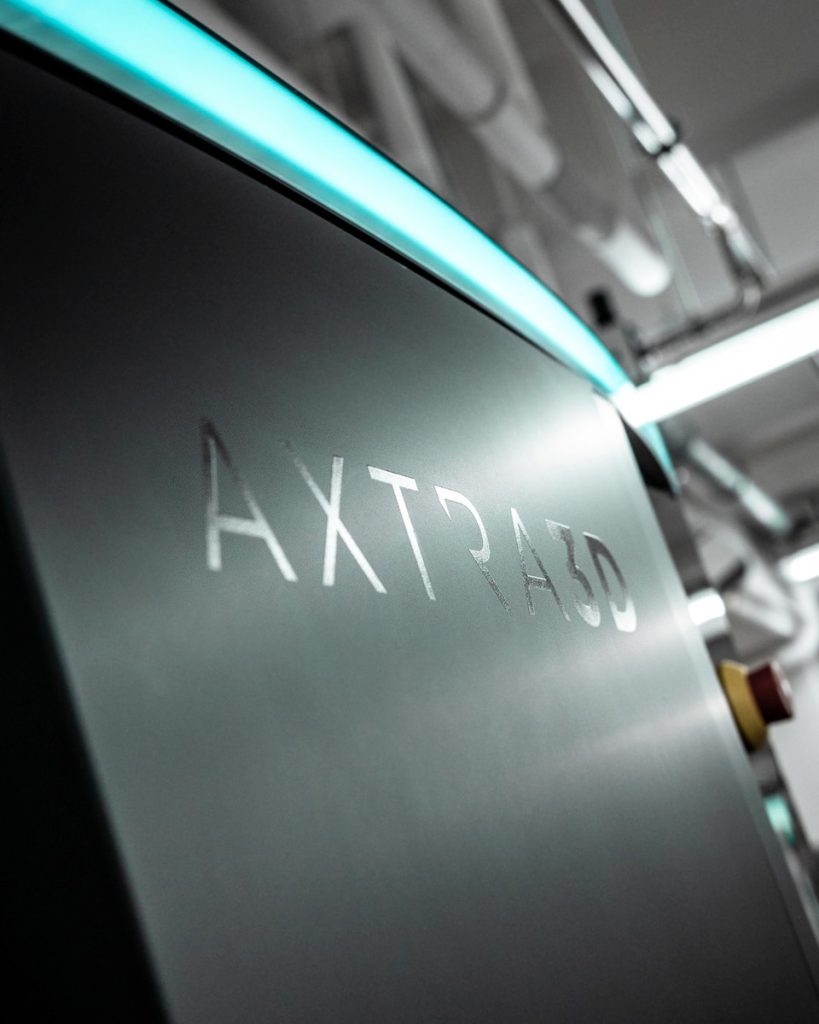
Axtra3D’s customer-focused business models
Those adopting resin 3D printing often have vastly different requirements. While some customers prefer fine-tuned offerings, others value the flexibility to experiment with new materials and processes.
To meet both needs, Axtra3D’s Lumia X1 is available in two distinct business models. The first, Axtra Solutions™, provides fully optimized, turnkey 3D printing solutions. These feature complete 3D print profiles fine-tuned for optimal performance.
On the other hand, Axtra OpenAccess™ offers customers the flexibility to experiment with new materials and applications.
Industry-wide 3D printing material ecosystem
Axtra3D offers a broad range of 3D printing materials suitable for various applications. These include materials that are high-strength, high-temperature, ESD-compatible, fire-retardant, biocompatible, and elastomers.
The company has built this extensive portfolio through partnerships with leading material developers like BASF, 3D Systems, Henkel, NextDent, Dreve, Keystone, and Pro3Dure.
These collaborations allow Axtra3D to guarantee high-quality and versatile material options based on specific application needs.
The Lumia X1: high-speed, high-resolution resin 3D printing
Launched in 2022, the Lumia X1’s Hi-Speed SLA technology overcomes compromises between throughput, accuracy, feature resolution, and surface finish. This makes it ideal for industrial and medical applications, where efficiency and precision are paramount.
By leveraging HPS and TruLayer technologies, the Lumia X1 offers 3D printing speeds that are 2X-20X faster than conventional DLP, LCD, and SLA printers. Typically, an SLA layer takes 118 seconds to complete. The Lumia X1 can achieve this in just 4 seconds, significantly boosting productivity.
Featuring a substantial build size of 249 x 140 x 495 mm, the Lumia X1 can 3D print large layers with a surface flatness of 20 microns. Consequently, the 3D printed parts possess a highly polished, glass-like finish.
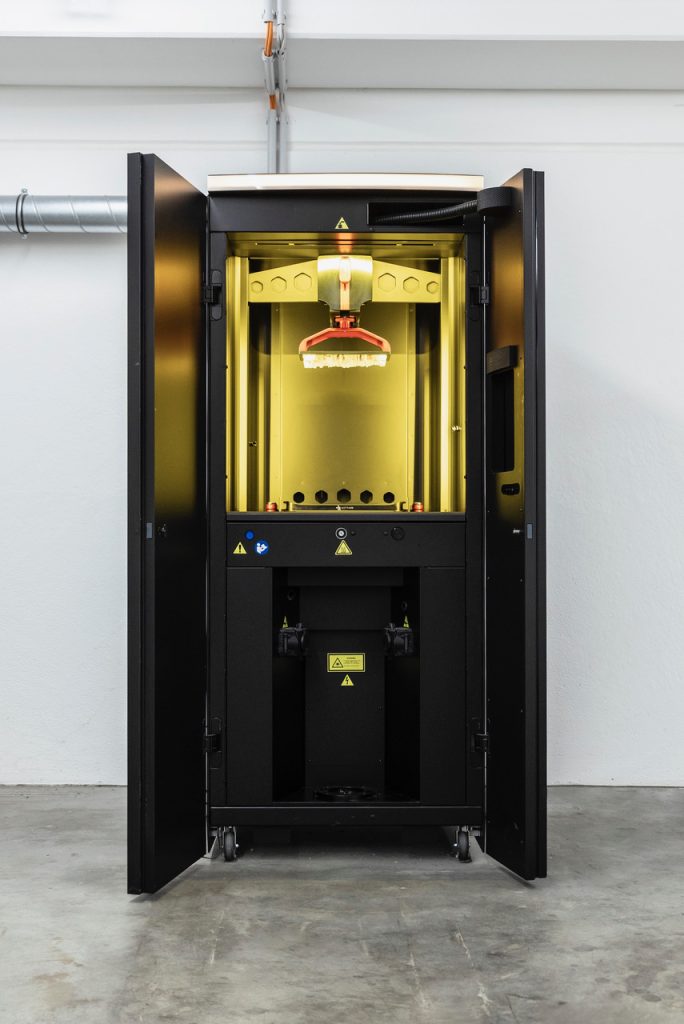
Lumia X1 applications
Prospective customers may wonder what applications the Lumia X1 is optimized for. A notable example is injection molding using ceramic mold inserts.
Conventional tooling involves significant lead times and high costs due to the need for tool steel, aluminum, and complex machining processes. Designers are often forced to compromise to manage costs, while some complex geometries are impractical or impossible to produce. This creates material waste and lengthy iterative cycles.
The Lumia X1 can be combined with Ultracur3D® RG 3280, a ceramic-loaded polymer, to produce high-quality mold inserts, drastically reducing lead times. The design and 3D printing process can be completed in 8 hours, enabling same-day prototyping and production.
The Ultracur3D® polymer exhibits exceptional properties, including high stiffness and temperature resistance. Moreover, the Lumia X1’s precise printing capabilities ensure mold inserts feature crisp details without post-processing.
3D printing costs are often under $100 per set of inserts, significantly lower than conventional methods. This speed and cost-effectiveness unlock rapid iteration and innovation capabilities. Healthcare firm Becton Dickinson has used the Lumia X1 to move from concept to production-ready parts within a single day.
Mold inserts 3D printed on the Lumia X1. Photos via Axtra3D.
The Lumia X1 offers notable value for electrical connectors, essential components for electrical devices.
Such parts require high precision, repeatability, and specific material properties such as fire retardance and ESD resistance. These stringent requirements are met by the 3D printer’s wide material compatibility. This includes the temperature-resistant Infinam ST 6100 and Henkel Loctite 3843, which maintain connector integrity under operational stress.
Axtra’s Hi-Speed SLA technology can produce 60 connectors in under three hours, facilitating high-volume production. Some customers are 3D printing 10,000 connectors monthly.
Connectors often feature complex geometries and fine details, including small hole diameters and intricate edges. HPS and TruLayer Separation combine to ensure precise edges and clean surfaces. The Lumia X1’s dual Z-axis system guarantees vertical accuracy, preventing thickness variations that could compromise functionality. Additionally, TruLayer Adaption ensures high repeatability for reliable connectors with consistent performance.
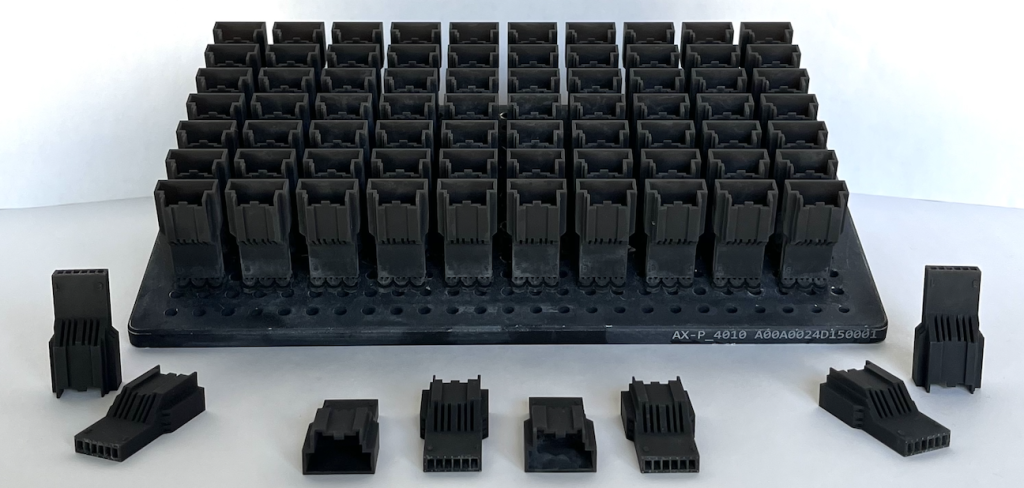
The Lumia X1 is ideal for functional prototyping and low-volume production, thanks to its high throughput, large build volume, surface finish, accuracy, and resolution.
The 3D printer’s HPS technology delivers 40% more throughput than other market solutions. Therefore, manufacturers can swiftly transition from design to functional parts without sacrificing quality.
Prototypes often require surface finish and detail that closely mimics the final product. The Lumia X1 excels here, delivering a glass-like, highly polished surface directly from the build plate. This eliminated the need for post-processing, saving time and resources.
TruLayer Adaption also ensures that prototypes and production parts possess high feature fidelity. The dual Z-axis prevents unintentional pivots, ensuring true vertical motion and consistent layer alignment.
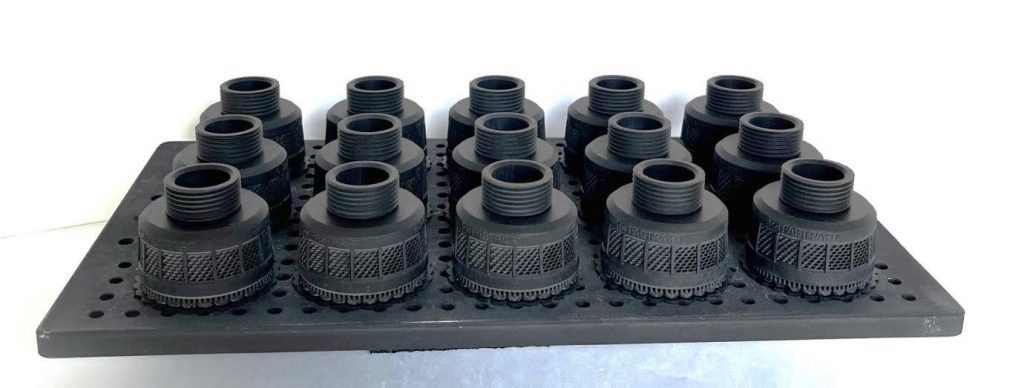
Dental applications also benefit from the advanced capabilities of the Lumia X1, especially for the production of models, aligner molds, splints, surgical guides, and dentures.
The dental industry demands precision, biocompatibility, and rapid turnaround. These requirements are met by the Lumia X1’s high resolution, fidelity and throughput.
Indeed, the 3D printer’s accuracy is crucial for producing appliances that offer a perfect fit. Its high 3D printing speeds also enable labs to handle more cases in less time, improving efficiency and profitability. Labs can then pass savings to customers, increasing accessibility to advanced dental solutions.
The Lumia X1’s broad compatibility with biocompatible materials that meet stringent dental requirements makes it an attractive option in this market. Axtra 3D’s partnerships with NextDent and Keystone enhance its available material options, guaranteeing quality and reliability.
Learn more: https://axtra3d.com/lumia-x1/
Start an evaluation: https://axtra3d.com/get-a-quote/
Dental components 3D printed on the Lumia X1. Photos via Axtra3D.
Want to help select the winners of the 2024 3D Printing Industry Awards? Join the Expert Committee today.
What does the future of 3D printing hold?
What near-term 3D printing trends have been highlighted by industry experts?
Subscribe to the 3D Printing Industry newsletter to keep up to date with the latest 3D printing news.
You can also follow us on Twitter, like our Facebook page, and subscribe to the 3D Printing Industry Youtube channel to access more exclusive content.
Featured image shows a close-up of an Axtra3D 3D printer. Photo via Axtra3D.



